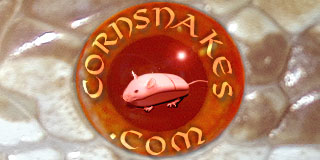Wait a minute, are you telling me that IF they would breed without a tail, it would be ok to breed such animals?
This is such a simplistic question that it's difficult to answer as a yes or no. Taillessness is a common trait in animals - off the top of my head I can think of natural taillessness in cats, dogs, rats, mice, gerbils, and sheep. Do I agree with breeding them? Well, the bobtail gene in dogs doesn't produce any side-effects that impact on the life of the animal, so I have no issues with that. One of the tailless genes in cats seems benign, so I can't really find any welfare issues to complain about there. On the other hand, dominant taillessness in cats, and all known tailless genes in rats have the potential to produce serious side effects, so I disagree with the breeding of those.
I guess if a tailless gene somehow mutated in snakes and did not negatively affect the life of the animal, I would have no real objections to it - obviously, if the gene caused other issues such as spinal problems or breeding issues for example, my opinion would be more negative.
Yes, and blind people live quite happily as well, so why not put the eyes of our children out because it looks so damn cool?
This way of thinking makes me sick
Cross-species comparisions do not always produce usable and logical rules or information - they can provide useful starting points for comparisons and learning, but I don't think this example does.
I don't disagree with breeding amelanistic snakes. I DO disagree with breeding amelanistic dogs - the mutation is comparable but the effect on the animal is not. Comparing humans to snakes is a bit of an odd comparison ... there are many things we do in the selective breeding of animals that would be objectionable if applied to humans.
Which is, by scientific experiments, a wrong tought. There eyes are way more damageable by UV light than normal eyes. Since UV light in the intense of the sunlight is not given in the viv, these animals are not disabled or feel pain abuot it.
That's quite interesting. If it's only direct UV from the sun that causes problems with amelanistic eyes, how come indoor bred and reared amelanistic rodents, a species which are more active in the dark than the light at the best of times, end up blinded? Once blinded, surely there is no input from the eyes so exposure to UV would be irrelevant? Do you have any links to these scientific experiements on the eyesight of albino snakes? I had a quick look on the JoH but I couldn't find anything relevant, so any references would be much appreciated.
You should talk to your local biology scientist. This discussion is not about these animals popping up in the wild. There are many painful and disabling disorders appearing in the wild and some of these animals even reach adulthood. We are talking about a planned breeding of them.
Are we? I was talking and asking questions about the mutation and its effects in order to find out if these animals do have a painful and disabling disorder - learning instead of just judging on little to no real information.
In fact, my question why we can't breed eyeless animals was absolutely rhetoric. I am shoked that there are people that answer this question.
I can't answer your question, but I can certainly see the value in debating and sharing opinions (without claiming the other view "makes me sick") to learn and further our own understandings and feelings on different subjects, hypothetical or otherwise.
